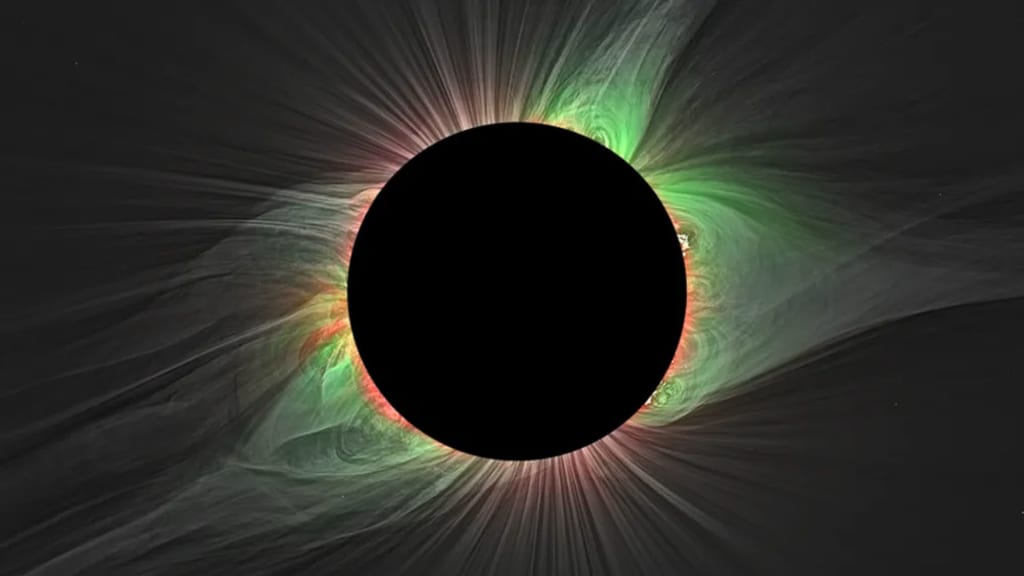Content warning
This story may contain sensitive material or discuss topics that some readers may find distressing. Reader discretion is advised. The views and opinions expressed in this story are those of the author and do not necessarily reflect the official policy or position of Vocal.
Solar eclipse: 4-minute window into universe's secrets?
Solar eclipse: 4-minute window into universe's secrets

Millions in America are hoping to spend around four minutes of total darkness as the moon blocks the sun's light on Monday.
Those precious minutes will be an opportunity for often impossible science experiments—a chance to unravel the secrets of our universe.
Researchers will fly rockets into the path of the eclipse, stand in zoos watching animals, send radio signals across the globe, and peer into space with massive cameras.
And you don't need to be a scientist to take part.
But it could still go wrong. A solar flare or even some humble clouds could throw those plans into turmoil.
Possibilities of mating turtles or snoozing gorillas
Prof Adam Hartstone-Rose from North Carolina State University will spend Monday at the zoo in Fort Worth, Texas.
He'll be looking out for strange behaviours in animals, from gorillas to giraffes to Galapagos turtles. Spoiler: During the 2017 eclipse, the turtles suddenly started mating.
Lots of animals appear to have anxious responses to the sudden darkness.
"The flamingos last time did a beautiful thing," he says. "As the eclipse was building, the adults gathered the chicks into the middle of the flock, and looked into the sky as if they were worried about an aerial predator coming down."
The gorillas, meanwhile, moved to where they sleep and began their bedtime routines, as circadian rhythms were disrupted.
A glimpse into roaring plasma
When darkness falls on parts of North America, one part of the sun will peek out that people have been trying to study for centuries—its atmosphere, or corona.
This mysterious part of the sun is made up of magnetised plasma and measures more than a million degrees Celsius.
Normally, the sun's incredible brightness makes the corona impossible to see, but on Monday, scientists in Dallas, Texas, will be able to point instruments at it and take images.
Scientists with Aberystwyth University in Wales and from Nasa hope for an insight into solar wind, which is the plasma thrown from the sun's surface. Another puzzle is why the corona seems to be much hotter than the Sun's surface, despite being on its edge.
They might even see what is called a coronal mass ejection, when huge plasma clouds are thrown from the atmosphere into space. Ejections can cause problems for the satellites we use on Earth.
Radio listening party
The sun's activity can disrupt almost all our communications, including the humble long-wave radio.
Energy from the sun charges a region in the upper atmosphere called the ionosphere, which helps radio transmissions whizz around the planet. But when the moon blocks the sun, the ionosphere is affected.
To test what that does to radio, hundreds of amateur radio operators will join a listening party and send signals to each other across the world, competing for the most connections. They might communicate in Morse code or even speak
The results could help scientists better understand radio communications used by emergency workers, aeroplanes, and ships, as well as GPS, according to Nathaniel Frissell at the University of Scranton in Pennsylvania, who is running the party.
Flying jets to chase the eclipse
US space agency Nasa will fly WB-57 jets along the eclipse path to take pictures from 50,000 feet (15,240m) above Earth.
Flying above the clouds means there is no chance they will miss the eclipse. And the jets' cameras should take clearer pictures because they will capture wavelengths that don't normally make it all the way to Earth.
Along with spotting new details in the corona, Nasa may be able to study a dust ring around the sun and search for asteroids possibly orbiting nearby.
One instrument on board the planes called a spectrometer will help them learn more about the bursts of solar material flying out from the sun.
The planes will also buy time in the eclipse.
They travel at 460mph (740km/h), and will spend more than 6 minutes and 22 seconds in the moon's shadow - nearly two minutes more than us humble humans on Earth, who will get just four and a half minutes on the ground, if we're lucky.
#Solar eclipse #universe's secrets
Thanks all ❤️🤗❣️
About the Creator
Angel Malaika
hi i am angel malaika🤞 i love to write especially about technology i love to write in class i am 18 yrs old i have failed in school everyone please pray for me and subscribe my account and my posts friends Thank you all for sharing ❤️❣️
Enjoyed the story? Support the Creator.
Subscribe for free to receive all their stories in your feed. You could also pledge your support or give them a one-off tip, letting them know you appreciate their work.






Comments (1)
Interesting and delicious content. Keep posting more